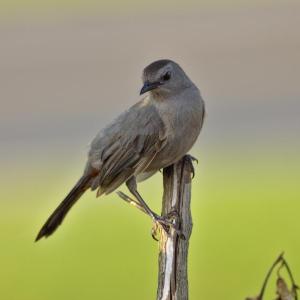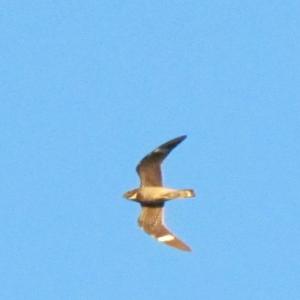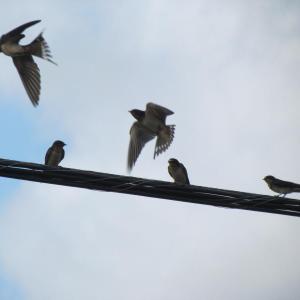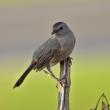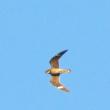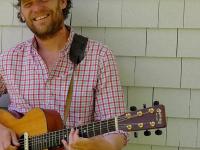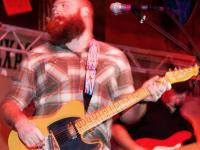Long Goodbyes and Short Hellos
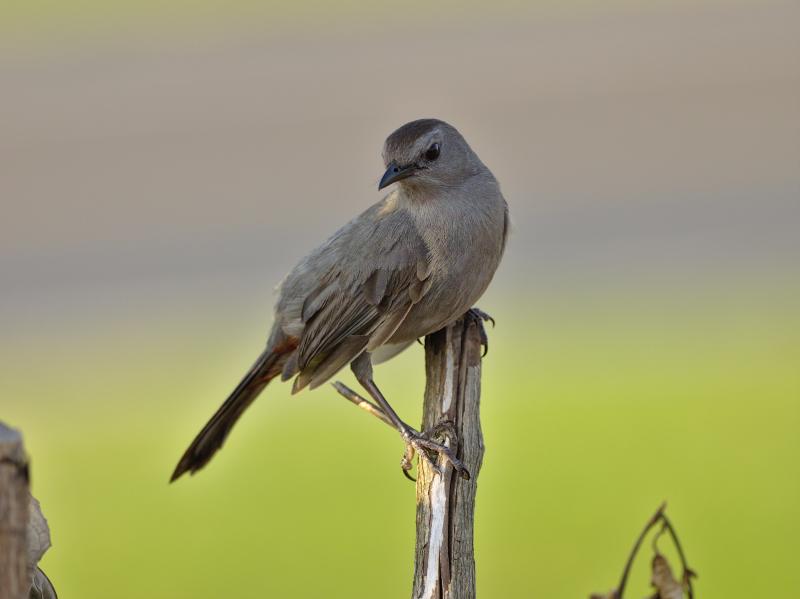 Gray catbirds are well-loved summer birds of yards and gardens across Maine, but soon will be heading south for the winter. Photo by Andrew Weitzel courtesy Wikimedia Commons
Gray catbirds are well-loved summer birds of yards and gardens across Maine, but soon will be heading south for the winter. Photo by Andrew Weitzel courtesy Wikimedia Commons
 Common nighthawks pass through our area in late summer, from mid-August through early September. Courtesy of Jeff Wells
Common nighthawks pass through our area in late summer, from mid-August through early September. Courtesy of Jeff Wells
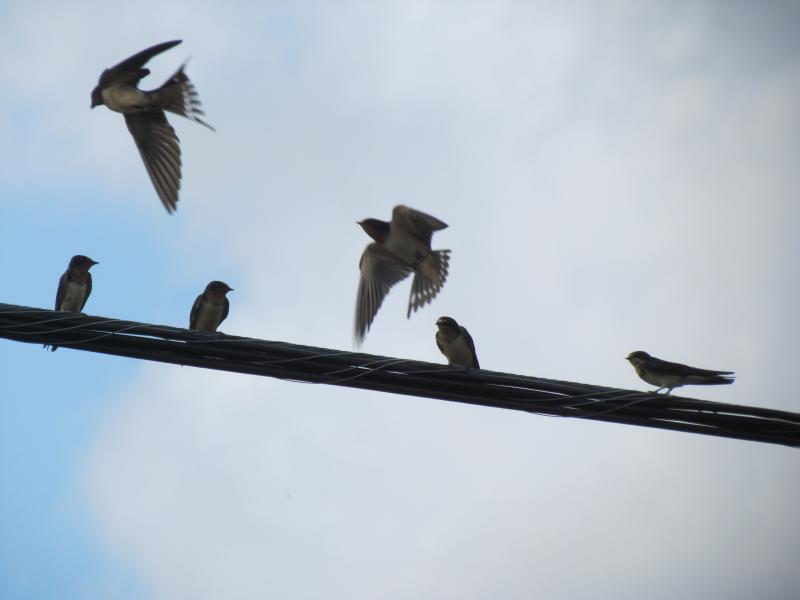 Swallows are now flocking together, often sitting on roadside wires, as they prepare to migrate south, as the authors saw these barn swallows (with a single bank swallow) doing on Appleton Ridge, Maine, recently. Courtesy of Jeff Wells
Swallows are now flocking together, often sitting on roadside wires, as they prepare to migrate south, as the authors saw these barn swallows (with a single bank swallow) doing on Appleton Ridge, Maine, recently. Courtesy of Jeff Wells
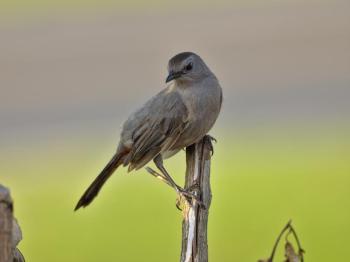 Gray catbirds are well-loved summer birds of yards and gardens across Maine, but soon will be heading south for the winter. Photo by Andrew Weitzel courtesy Wikimedia Commons
Gray catbirds are well-loved summer birds of yards and gardens across Maine, but soon will be heading south for the winter. Photo by Andrew Weitzel courtesy Wikimedia Commons
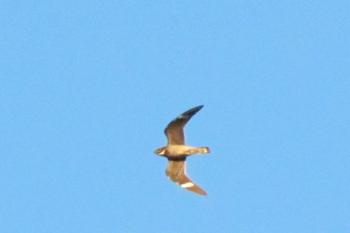 Common nighthawks pass through our area in late summer, from mid-August through early September. Courtesy of Jeff Wells
Common nighthawks pass through our area in late summer, from mid-August through early September. Courtesy of Jeff Wells
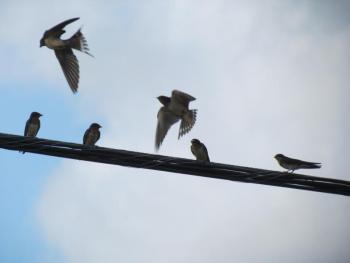 Swallows are now flocking together, often sitting on roadside wires, as they prepare to migrate south, as the authors saw these barn swallows (with a single bank swallow) doing on Appleton Ridge, Maine, recently. Courtesy of Jeff Wells
Swallows are now flocking together, often sitting on roadside wires, as they prepare to migrate south, as the authors saw these barn swallows (with a single bank swallow) doing on Appleton Ridge, Maine, recently. Courtesy of Jeff Wells
On cooler, early evenings these August days, we have been out sitting comfortably on our porch, our little black dog happily beside us sniffing the air. We haven’t been using our noses but instead listening and scanning the powder blue skies and the thick, green of the lilac bushes, crabapple trees, maples, ashes, and other vegetation.
From the middle of the lilac has come the yowling catlike cries of one of our local, well-named gray catbirds. Eventually, if we wait awhile, it usually pops up on the top of a spindly sapling whose leafless tip extends above the shrubbery. The bird’s black cap and all-gray body is on display while it gives its loud, scratchy whines that give the impression that it’s very annoyed.
We always eagerly await the sighting (and sound) of a catbird in our yard each May. Once the first arrives, they become a constant and well-enjoyed part of the summer scene. But as we move into August, each time we hear one we can’t help but wonder wistfully how much longer they’ll remain. Catbirds are, of course, migrants that leave our area in winter. Some go as far south as the Caribbean, Central America, and even northern Colombia.
Around this time it also often occurs to us that we haven’t heard that familiar twitter from high in the sky above us that we had heard seemingly every moment over the last two months—the sounds of the so-called “flying cigars,” the chimney swifts. Have they left already, we wonder? We keep scanning and sometimes we spot one silently zipping by, its wings almost a blur. Last week, as we sat with our eyes on the sky, the one was joined by another. Then two more. OK, chimney swifts are still here today. But tomorrow? Will that be the last one we see here this season? Eventually, they will all have departed for South America until next May.
Those same evening skies that have held chimney swifts will soon hold another insect-eating traveler, one much, much bigger than the little chimney swifts. Common nighthawks pass through in August, migrating south from points north (some from as far north as Yukon and the Northwest Territories). They are a welcome sight with their narrow, falcon-like wings flashing a brilliant patch of white as they erratically swoop and tip through the air.
We’ve often noted that it seems as though common nighthawks southward migration coincides (at least in our area) coincides with the seasonal appearance of flying ants—the time when ant colonies send out their sexually reproductive males and females to start new colonies. Massive numbers of males, in particular, emerge and become part of what is sometimes called “aerial plankton.” They and other insects that are flying or floating in the sea of air in which we live are consumed by aerial insectivores like swifts and nighthawks.
Swallows, too, are among the aerial insectivores that are starting to amass into flocks and depart our spaces for the season. We had been noticing that we weren’t seeing as many swallows around in the last few weeks. So we were thrilled to come across a flock of them perching on the roadside wires and foraging over the blueberry fields on Appleton Ridge last weekend. Thirty or so barn swallows made up the bulk of the group but a swarthy, blocky headed cliff swallow’s creaky calls gave it away. Then two tinier, almost dainty, brown-backed bank swallows buzzed in and sat on the wires.
We watched them all with deep appreciation, their bodies silhouetted against the deep blue sky of an August day in Maine. We were saying goodbye to them for the season. Maybe not today or tomorrow, but soon. And we would soon be saying “hello” to others—nighthawks, whimbrels, turnstones, and many more. The melancholy of change becomes the joy of new beginnings experienced through the birds around us.
Jeffrey V. Wells, Ph.D., is a Fellow of the Cornell Lab of Ornithology and Vice President of Boreal Conservation for National Audubon. Dr. Wells is one of the nation's leading bird experts and conservation biologists. He is a coauthor of the seminal “Birds of Maine” book and author of the “Birder’s Conservation Handbook.” His grandfather, the late John Chase, was a columnist for the Boothbay Register for many years. Allison Childs Wells, formerly of the Cornell Lab of Ornithology, is a senior director at the Natural Resources Council of Maine, a nonprofit membership organization working statewide to protect the nature of Maine. Both are widely published natural history writers and are the authors of the popular books, “Maine’s Favorite Birds” (Tilbury House) and “Birds of Aruba, Bonaire, and Curaçao: A Site and Field Guide,” (Cornell University Press).

